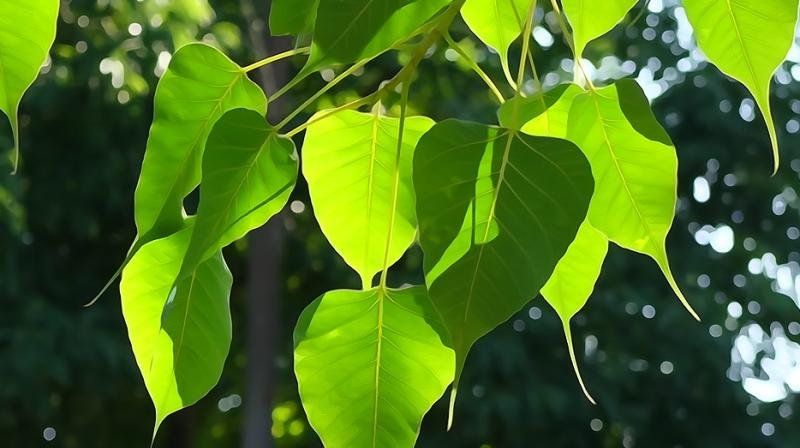Bark of tree
Bark Of Tree
The bark of the Arjun Tree, or Terminalia Arjuna, is widely recognised in Ayurveda for its wealth of cosmetic and health advantages. The primary medicinal component of this tree used for therapeutic purposes is its bark. It is well known for its cardioprotective properties in addition to its numerous skin advantages.

The therapeutic actions of T. arjuna include gastro-productive, anti-atherogenic, hypotensive, anti-inflammatory, anti-carcinogenic, and anti-mutagenic qualities. Arjuna is also endowed with a variety of other nutrients, including arjun Genin, Arjun Olic acid, polyphenols, and gallates, as well as several essential elements for the health of our hearts, like potassium. Its cardio-tonic characteristics, which aid in heart muscle strengthening, are extremely thoroughly documented and clarified in the age-old science of Ayurveda.

Ayurvedic Attributes Of Arjuna:
- Guna (qualities): Laghu (light), Ruksha (roughness)
- Rasa (Taste): Astringent, bitter, slightly pungent
- Vipaak (Post digestive effect): Pungent
- Veerya (potency): Sheet (cooling)
- Properties of the dosha: Kapha-Pitta Shaamak
- This plant is a skin-friendly component because of its astringent, bitter, and faintly pungent properties. Pitta dosha is balanced by its cooling effect on physiology, and Kapha dosha is balanced by its astringent character.
Different Ways To Use Arjuna:
- This herb can be incorporated into your routine in several ways. It is usually incorporated orally and topically for different health and skincare benefits.

- It can be used in the form of a decoction, Arjuna Tea, tablets, or powder for oral intake. For topical application, it can be mixed with other herbs and mixtures as per the concern and can be applied.
- To treat serious cardiac issues, the herb should be incorporated only under an Ayurvedic Doctor’s guidance.
Arjuna For Different Skin Types And Concerns:
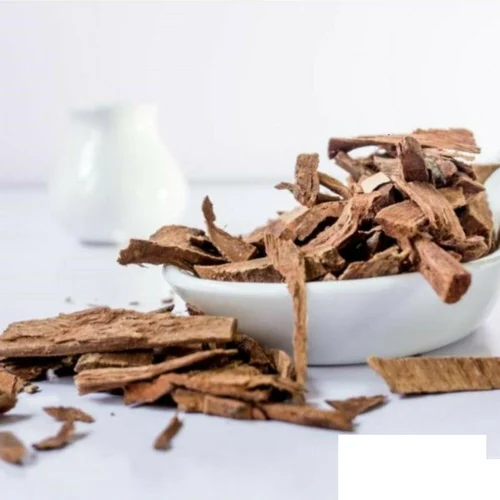
1.Arjuna For Pigmentation
- As per Ayurveda, hyperpigmentation is associated with an aggravated Pitta dosha in the body, which happens due to heat and sun rays, and hormonal imbalance in the body. Arjuna bark helps in reducing tanning and pigmentation due to its pitta-balancing properties.
- An anti-pigmentation mask can be made by mixing 1 tsp of Arjuna bark fresh powder and milk with 2–3 gms of wild turmeric. This can be applied evenly on the face and neck for 5–10 minutes and then rinsed off with normal water. This anti-pigmentation mask can be used 1–3 times a week.
- Additionally, applying a mix of the powders of Arjuna bark and Manjistha (Rubia Cordifolia) root with honey over the face helps to diminish dark spots and pigmentation.
2. Arjuna For Skin Ageing
- Arjuna bark extract is a great addition to your anti-ageing routine. Ageing is usually associated with an increase in the number of free radicals.

Arjuna is known for its antioxidant properties that prevent skin damage caused by these free radicals. It helps in the regeneration of skin cells, hydrates the skin and improves skin elasticity. It also prevents thinning and sagging of the skin.
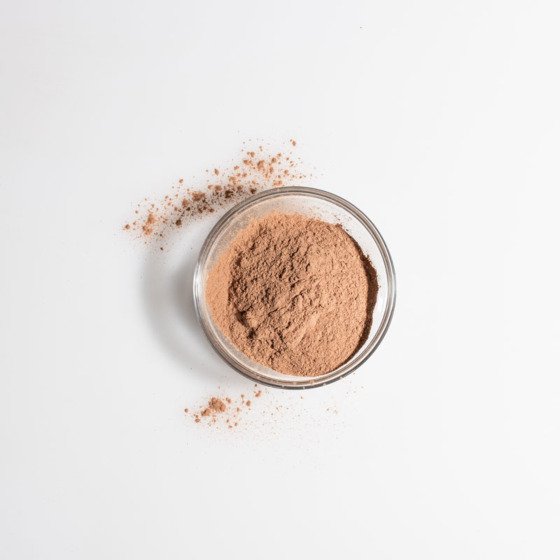
3. Arjuna For Dry And Rough Skin:
- Arjuna is beneficial for dry and rough skin concerns as it strengthens the skin barrier by reducing the transepidermal water loss, and encourages sebum production, thereby reducing the signs of dry skin and protecting the skin from other external challenges.
4. Arjuna For Acne And Breakouts:
- Arjuna paste helps manage acne and pimples by reducing inflammation due to its anti-inflammatory properties. It also has astringent properties that cause the contraction of skin cells and help in reducing acne, caused due to excess oil production in the skin.
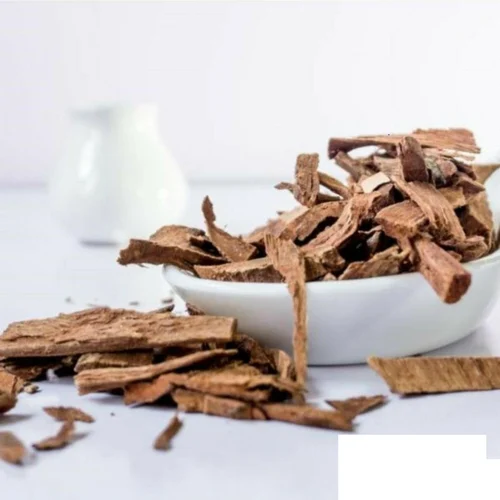
- A blend of a fresh paste of Arjuna bark and honey can be applied evenly on the face for 4–5 minutes. Rinse it off with normal water. This can be used 2–3 times a week as a remedy to get rid of acne and pimples.

5. Things To Avoid:
- Ayurvedic herb Arjuna is generally considered safe in most situations when used for wellness purposes, however, it’s always good to use such herbs under the guidance of an Ayurvedic Practitioner, as it is important to approach the use of such herbs with care.
Neem bark :
What is neem?
- The Meliaceae family, which includes mahogany, includes neem. Neem is known by the scientific name Azadirachta indica.
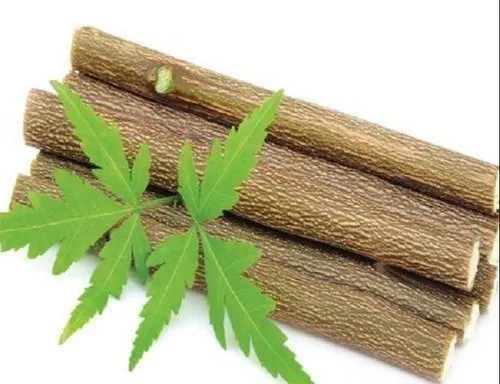
- This Latinized name is derived from the Persian terms “Azad,” “dirakht,” and “i-Hind,” which all mean “of Indian origin.”
- This term so refers to the “free tree of India.”
- This evergreen tree can reach heights of between 50 and 120 feet. This tree’s unique quality is its ability to thrive in dry environments with minimal rainfall. So, because it can withstand drought, it is perfect for the world in which we live today.
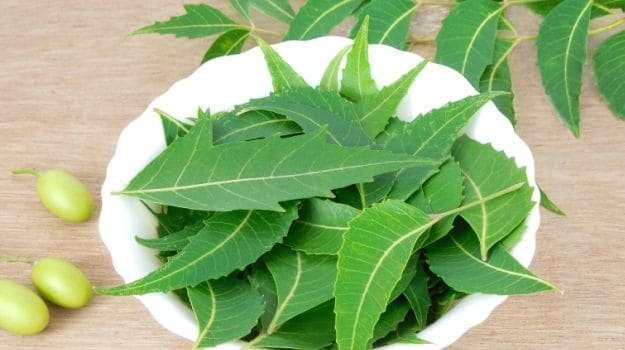
Where is neem cultivated?
- Neem is mainly cultivated in the tropical climate of the Indian subcontinent — India, Pakistan, Nepal, Sri Lanka, and Bangladesh.
Uses of neem:
- Different parts of the neem tree are used in several Ayurvedic remedies. In particular, the bark, powder, leaves, and oil are tremendously useful, and hence popular. Let’s explore the uses of different parts and extracts from the neem tree.
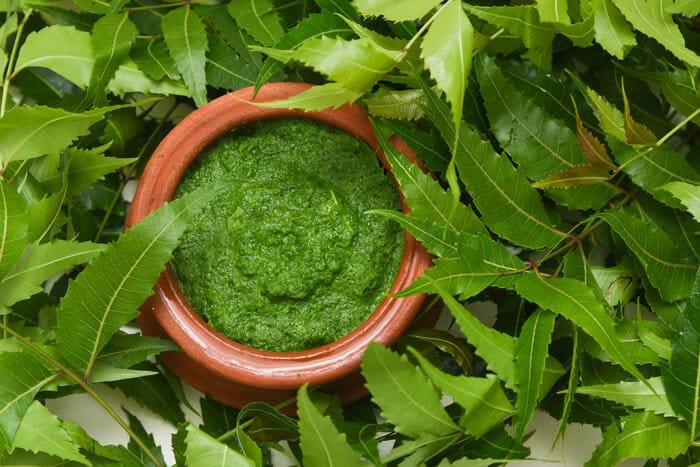
Uses of the bark:
A) The bark of the neem tree has antiseptic and astringent properties, which help heal wounds.
B) Extracts made from neem bark have antioxidant properties.
C) It also acts as a coolant.
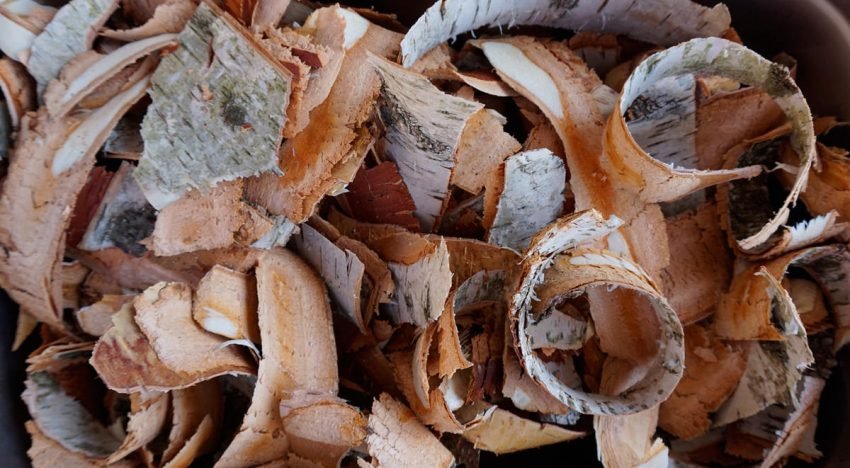
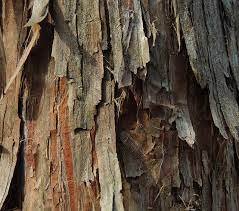
It is used to
- ward off tiredness
- treat worms
- control fever.
- treat loss of appetite
- clean teeth
- balance the Kapha constitution
How to use it:
- Neem tree twigs were traditionally just snapped off and chewed; they stop tooth decay, poor breath, and bleeding gums.
- To manufacture neem powder, the neem tree’s bark is additionally crushed and pulverised.
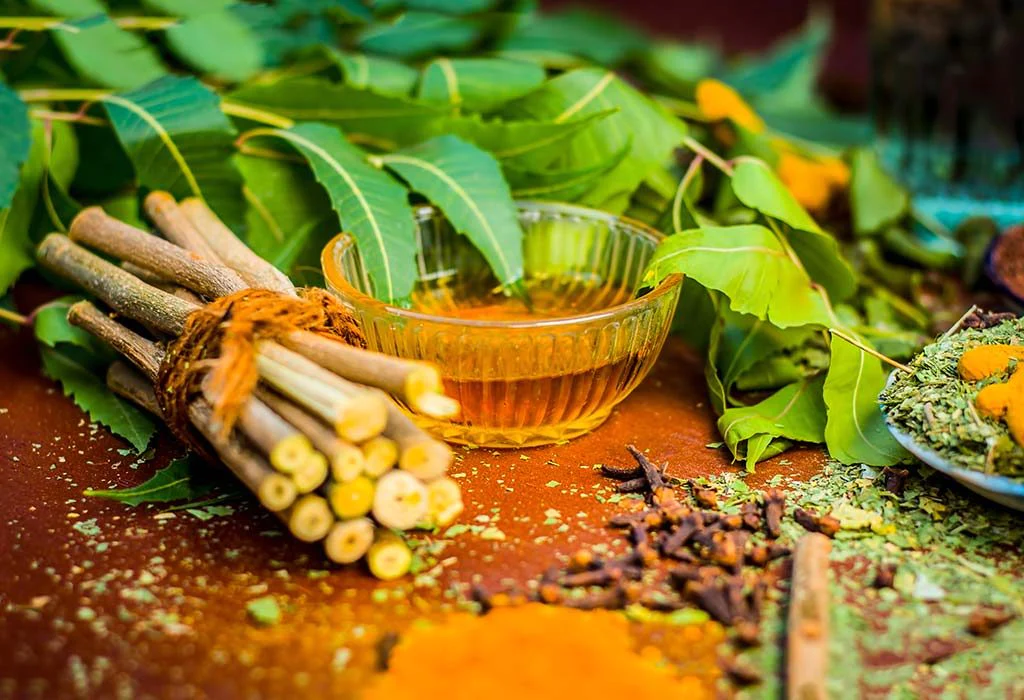
- You have included it in the festive pachadis and rasam, which are side dishes made from various ingredients and eaten with rice and tamarind. To get rid of acne, you might also dab the oil on your skin.
You may have seen folks rub its dried leaves to the forehead of a sick person or discovered them in closets used to ward against insects. Perhaps you ingested a mixture containing this component to treat your sickness yourself!
Yes, we are discussing neem, a plant with a variety of uses.
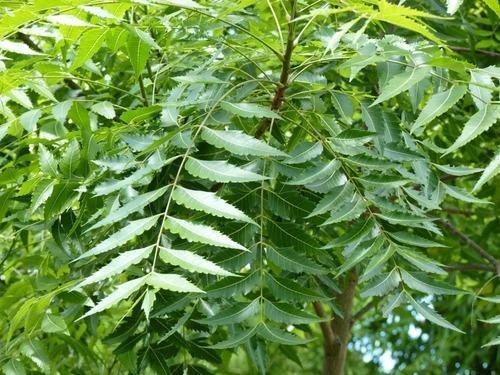
Top of Form
The peepal tree is considered the mythical ‘Tree of Life’ or ‘World Tree’ of the Indian subcontinent. The peepal tree, also called Ficus religiosa, belonging to the family Moraceae, is a variation of the fig tree known as the bodhi tree.
The word ‘Ficus’ in Latin refers to ‘fig’, the fruit of the tree and the word ‘Religiosa’ refers to ‘religion’, as it is sacred in both Buddhism and Hinduism. Also, for this reason, it is named ‘Sacred fig’. It is a huge tree often planted near holy places and temples.
The vernacular names of peepal trees are Pipal, Pipala in Hindi; Jari, Piplo, Pipalo, Piparo in Gujarati; Pimpal, Pipal, Pippal in Marathi; Ashud, Ashvattha, Asvattha in Bengali; Aswatha in Oriya; Ahant in Assamese; Pippal, Pipal in Punjabi; Ravichettu in Telugu;
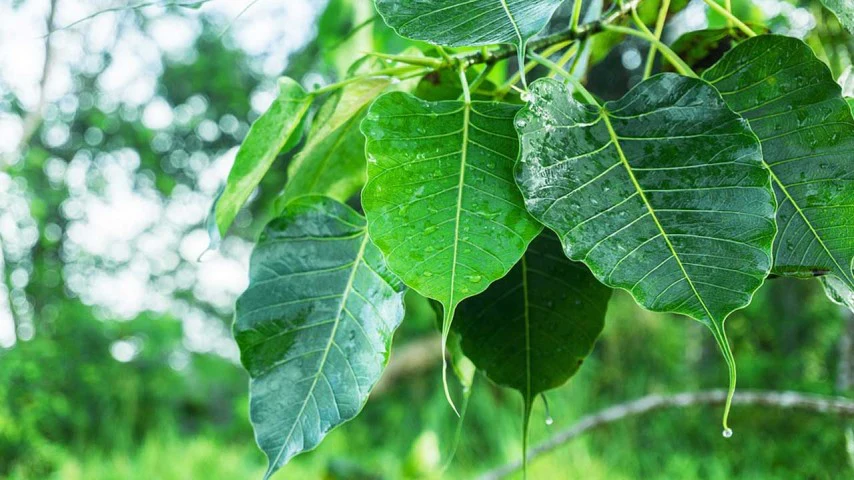
Arara, Arasu, Arasan, Ashwarthan, Arasamaram in Tamil; Ranji, Arlo, Basri, Ashwatha, Ashvatthanara, Aralegida, Aralimara, Basari, Ashvathamara, Ashvattha in Kannada; Arayal in Malayalam; Bad in Kashmiri.
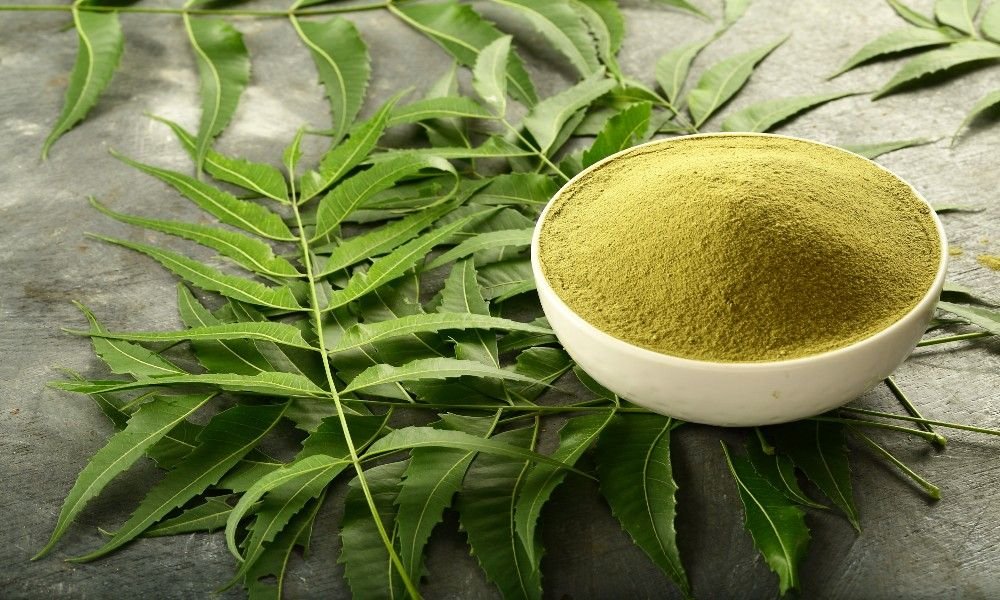
Tree! Clearly, neem has a wide range of applications. The leaves, bark, oil, flowers, and seeds are among the portions of it that have some use. Since ancient times, this sacred tree has been utilised to treat a variety of illnesses and is highly renowned for its curative powers. Neem is the first medicinal plant described in the Siddha medical system, which is thought to be about 10,000 years old, according to studies.
The leaf juice of the peepal tree has traditionally been used to treat cough, asthma, diarrhoea, ear discomfort, toothache, haematuria (blood in urine), migraine, scabies, eye difficulties, and gastrointestinal problems. Peepal tree stem bark may aid with paralysis, gonorrhoea, bone fractures, diarrhoea, and diabetes.1 More research is needed, however, to demonstrate the possible application of advantages for the goals indicated above. It should also not be used for self-medication.
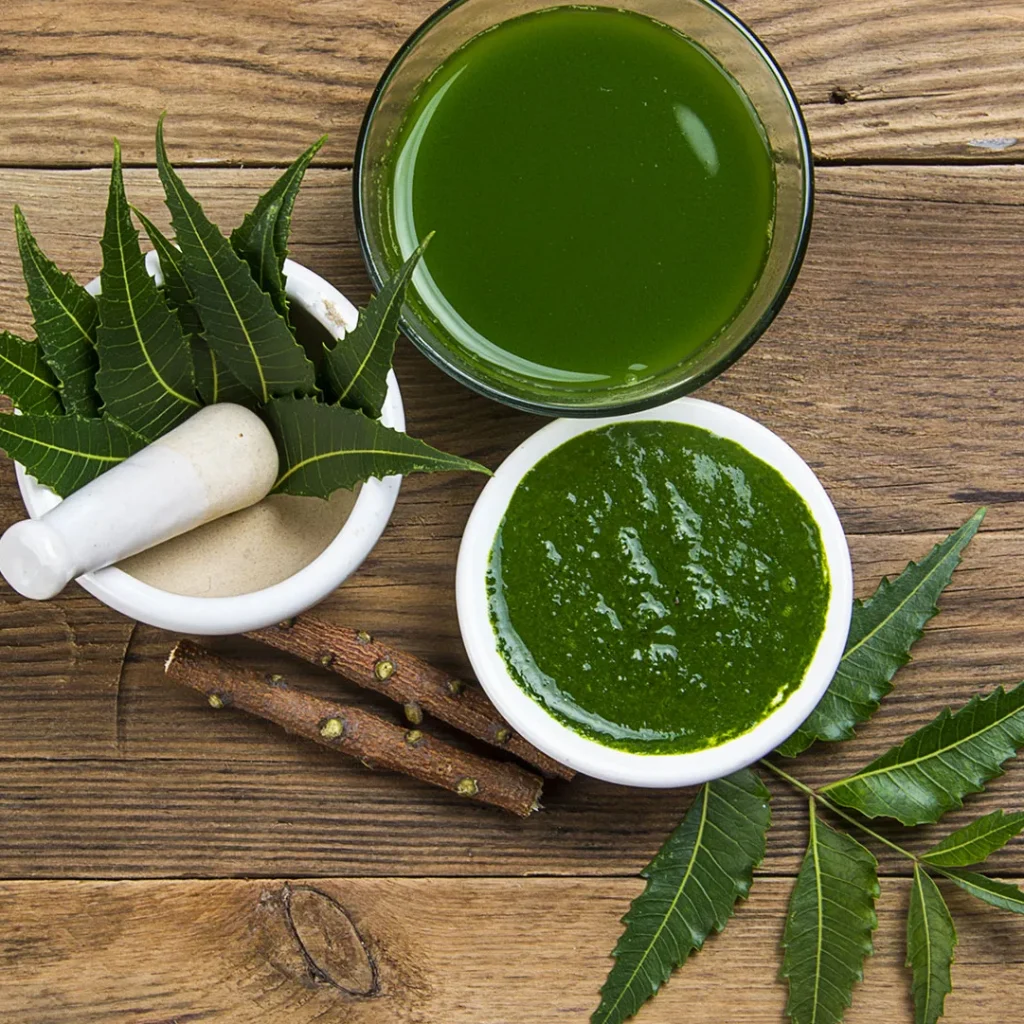
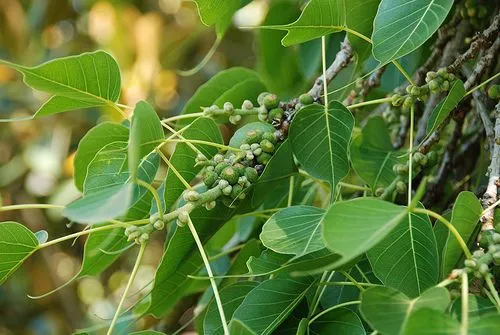
According to Ayurvedic medicine, every part of the Peepal tree — the leaf, bark, stalk, seeds, and fruit — has medicinal properties. Peepal tree leaves include glucose, asteroid and menus, as well as phenolic compounds, while its bark contains vitamin K, tannins, and phaetosteroline.
Peepal Tree Benefits and Applications for Asthma. The bark and ripe fruits of the Peepal plant are useful in the treatment of asthma.
- For indigestion.
- For stomach pain.
- For eczema and itching.
- For a more radiant complexion.
- To treat cracked heels.
- To relieve toothache.
- To alleviate eye strain.
